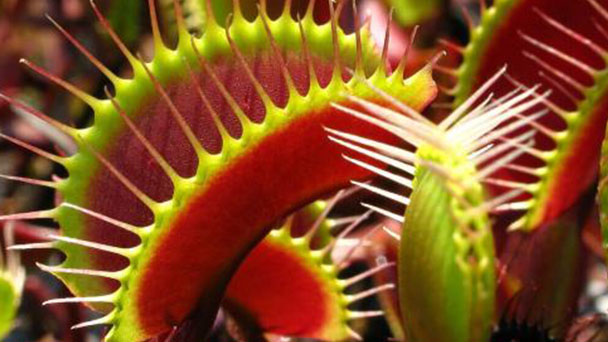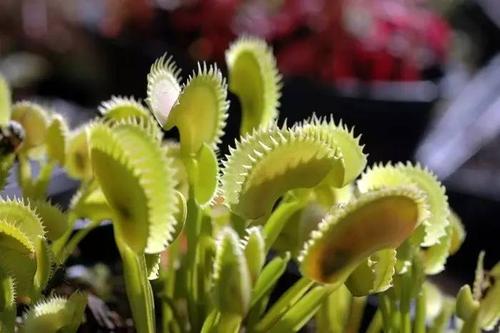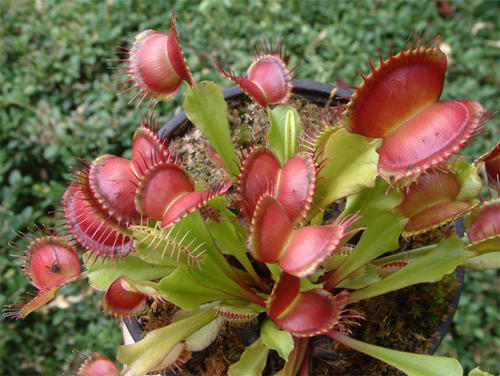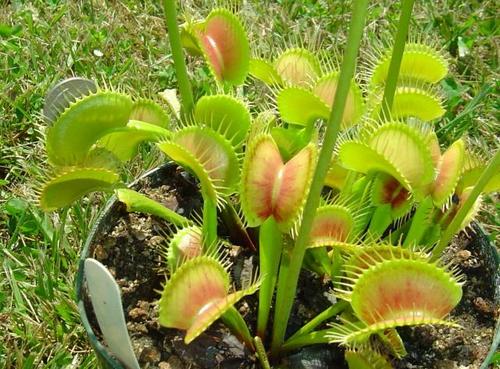How to Propagate Venus Flytrap (Dionaea Muscipula)
Written by Maggie
Dec 30 2022

In general, there are three methods of Venus Flytrap propagation, which are leaf insertion, plant division and sowing propagation. Each propagation method has its own characteristics, so flower lovers can choose the suitable propagation method according to their own actual situation. Now, let's see these three propagation methods of Venus Flytrap.

Propagation Methods of Venus Flytraps
Like popcorn, you can't just have one venus flytrap. Using flytraps that have never existed in the wild is the definition of ethical propagation. Plants used for commercial purposes are frequently grown from tissue cultures. That necessitates specialized tools and information. The rest of us can obtain new plants in three different ways.Leaf Thrusting Propagation
Venus Flytrap's common method of propagation is leaf thrusting, in which a stalk is inserted into the soil to create a new plant. From late spring to early summer, when Venus Flytrap is in full growth, we dig the Venus Flytrap out of the soil and see its white petallike petioles buried in the soil. Take the Venus Flytrap and peel off the petioles (the parts that look like leaves), along with the white base of the petioles. Place the petioles in a growing medium that is kept in high humidity and given bright light. After a few weeks, new shoots will start to appear.
The process of bud formation is slow, so have patience to wait. As long as the base of the petiole does not turn black and rot, you have to wait. Since the petioles have no roots at this stage, it is important to maintain humidity. The moist medium must be attached to the petioles to provide water. Light intensity is also important at this time. It needs to be bright and full of light, but not direct sunlight, or the petioles will get too hot and dry. The age of petioles is also related to reproductive success. In general, petioles in the prime of life are fatter and have the greatest chance of producing seedlings. Old and young leaves are less likely to produce new shoots. So, for propagation, we can use the outer ring of the Venus Flytrap and plant back the rest of the center;If the petiole can carry a root, the chance of success is higher.
In order to reduce petiole damage, it is recommended to use a clean medium to prevent petiole rot. Therefore, it is recommended to use water moss as the medium for leaf insertion, and then consider transplantation to other places when the seedlings grow out.

Propagate Venus Flytrap by Division
Division propagation is a common propagation method for Venus Flytrap. Division propagation is often carried out in winter and autumn in southern regions, and it can be carried out in combination with spring planting in northern regions. Venus Flytrap often has lateral shoots, and when it is large enough, the bulbs of the ramets will naturally separate from the mother plant, which can be dug up and planted separately or when repotted.(Sometimes buds also grow on the flower stem, and can be grown as plants.)
Sowing Propagation
After roughly two years of growth, the Venus flytrap plant will begin to bloom. You will get black fruits with seeds if you let the flowers stay on the plant. Let the seeds dry out before collecting them. The seeds must be sown in a peat and sand mixture. To keep the humidity inside, keep the mixture damp and cover it with a clear bag or plastic wrap. Expect nothing for a few weeks because the Venus flytrap takes a long time to germinate. Take off the plastic once the seeds have sprouted. Before transplanting the miniature Venus flytraps, they should be given a year to grow.Venus Flytrap seeds should be sown as soon as possible after harvesting. The longer the time, the germination rate will decrease and the storage time should not exceed 6 months (most Venus Flytrap seeds sold in China are fake seeds, please note!). The suitable temperature for sowing propagation is 15-30 degrees, the seeds are directly scattered on the surface of the moist and clean matrix (pure water moss or mixed peat can be used), the surface is not covered with soil or covered with 1-3 mm high fine peat or fine red jade soil to help fix the root system, maintain high humidity and bright light (pot bottom can be put water plate moisturization), a month or so germination. Seedlings grow slowly and grow into adult plants only after 3-5 years of planting. They can live for decades.
Tissue culture seedlings propagation can be used if there is mass reproduction. The cotyledons or mature leaves after seed germination were used as explanations. After routine disinfection, determined shoots were induced on the medium of MS+ 6-BA2.0 mg/L and NAA 0.2 mg/L. Subculture was carried out on the medium of MS+ 6-BA 1 mg/L. Root induction was performed on the medium of MS 10 NaA 0.5 mg/L. One Venus Flytrap can produce more than 10,000 in vitro seedlings. The test tube seedling out of the bottle to maintain a high humidity, the survival rate can reach more than 98%.

The Best Planting Mix for Venus Fly Trap Care
Instead of potting soil, sphagnum moss with some sand or small pieces of orchid bark work best for the Venus fly trap. The orchid bark fragments are acidic and keep the plant's moisture in place while the moss quickly drains. Peat moss and perlite can also be mixed one part each. It is sufficiently acidic for the plant because of the peat moss. Before inserting the potting medium into the pot, thoroughly wet it. Make a small nest in the middle of the potting medium. In the nest, set the Venus Fly Trap, and then surround it with potting soil. Venus fly traps require well-drained soil devoid of nutrients and minerals.
- Read More: How Big Do Venus Flytrap Get
Frequently Asked Questions
How Big Do Venus Flytraps Get?
When fully grown, the majority of Venus flytraps don't exceed 5 inches in height or width.
Can a Venus Flytrap Survive Without Bugs?
In the absence of insects, a Venus flytrap can exist, but it will grow slowly and be weak. It will be able to get all the nutrients it needs to grow big and strong with the help of a bug twice a month.
Can a Venus Flytrap Survive Without Sunlight?
No, a plant must receive some sunlight. For the best growth, Venus flytraps require a strong sun. They still need sunlight even when dormant.
Latest Updated
- Benefits of Bugleweed - 7 Science-backed Health Benefits
- Bugleweed Dangers & Side Effects - Is It Poisonous?
- How to Plant Evergreen Trees - What You Should Know
- When to Plant Evergreens - Grow Guide for Evergreen Trees
- 12 Wonderful Evergreen Shrubs for Your Garden
- 12 Popular Evergreen Plants with Pictures for Beginners
- When And How To Prune A Lilac Bush Like a Pro
- How to Grow & Care for Lilac Vine (Hardenbergia Violacea)
- Japanese Lilac Tree (Syringa Reticulata) Care & Propagation Guide
- Shumard Oak Pros and Cons - What to Know
Popular Articles
- Winter maintenance of Antirrhinum Majus
- How to Grow Terminalia Mantaly Tree
- How to Grow and Care for Crossostephium Chinense
- How to grow Antirrhinum Majus in spring
- Peristeria Elata (Dove Orchid) Profile: Info & Care Guide
- Underwatered Snake Plant (Sansevieria Trifasciata) - Signs And How To Fix
- How to Care for Brazilian Jasmine Plant (Mandevilla Sanderi)
- How to Grow & Care for Graptopetalum Purple Delight in Summer
- Rosa Chinensis (China Rose): Plant Growing & Care Tips
- How to Care for Baby Sun Rose (Aptenia Cordifolia)